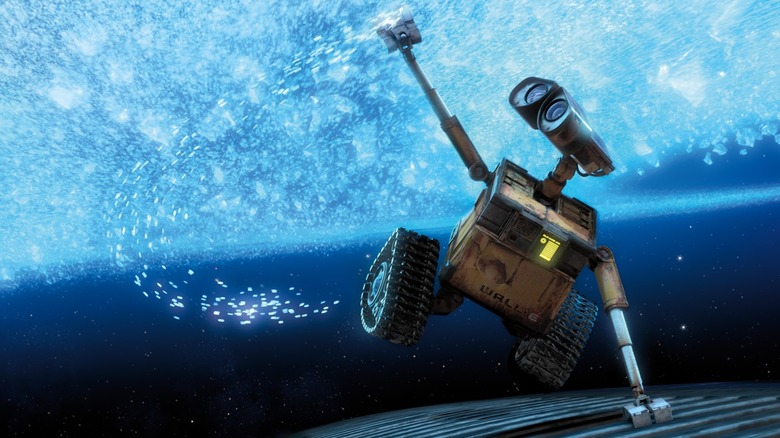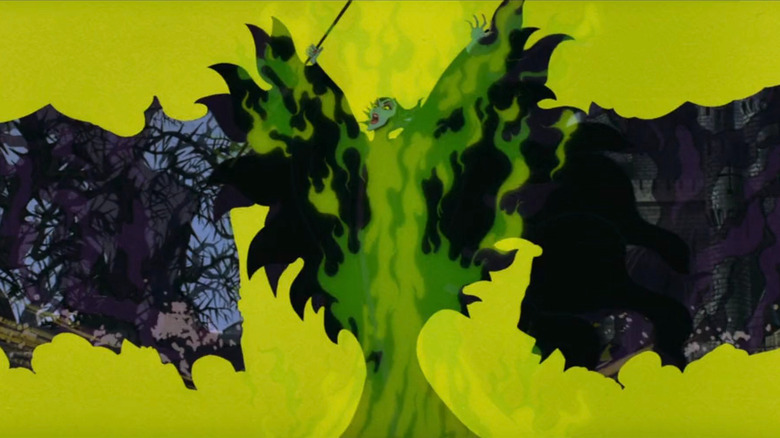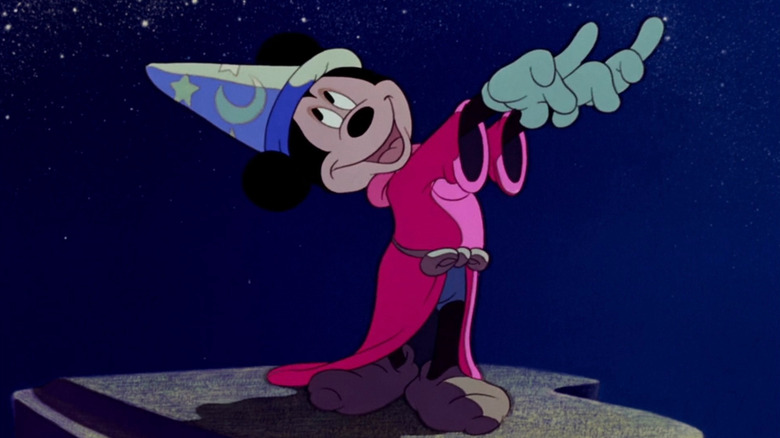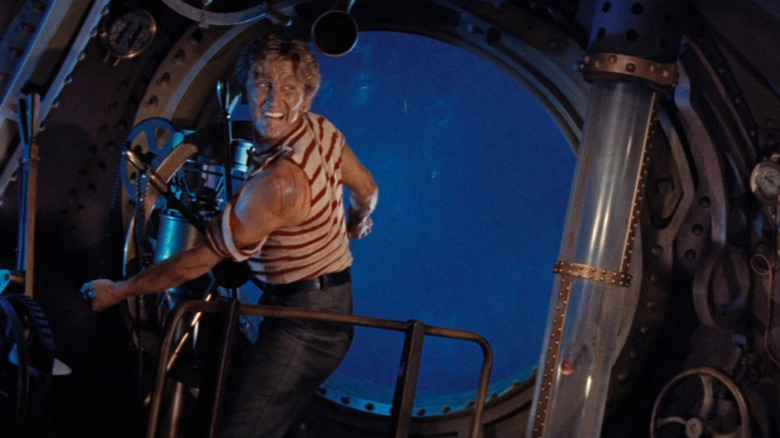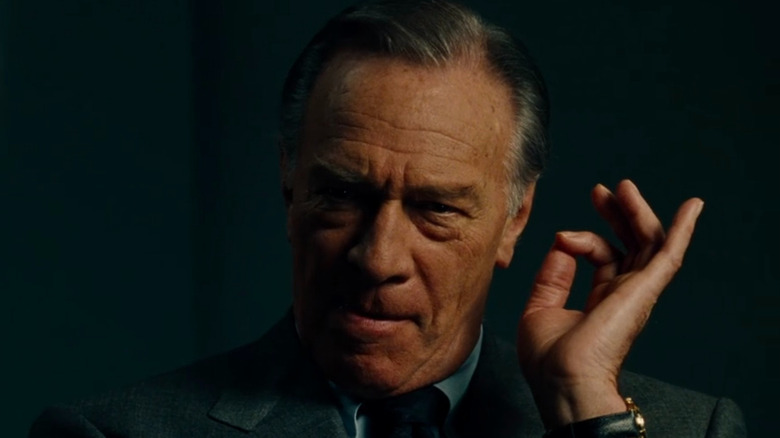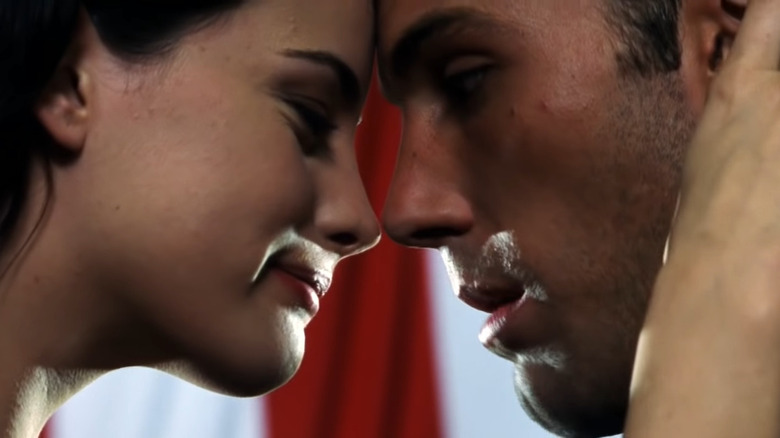Why The Pixar/Criterion Team-Up Is Great News For Disney Fans
To say that the news Andrew Stanton's "WALL-E" would be joining the Criterion Collection was surprising would be a gigantic understatement. Do not misinterpret that as a denigration of any kind towards the picture. To my mind, "WALL-E" is not just one of the greatest animated movies of all time but one of the greatest movies in general as well, and depending on the day, I would call it my favorite film produced by Pixar. It deserves to be in the Criterion ranks with the other important works of cinema.
No, what is surprising about it is that Disney doesn't do this. This is a company obsessed with brand management and crafting its own corporate mythology. Disney rarely allows retrospective screenings of its works in repertory theaters, and the Disney Vault is still in effect, despite the presence of Disney+. Allowing "WALL-E" to be released by another company is frankly unheard of.
Possibly more exciting than "WALL-E" joining the Collection (which I am pretty f****** excited about) is the prospect of other pictures made by Disney joining as well. Though the omnipresent churn of content makes it difficult to see now, Disney has been home to so many important, boundary-pushing films that now may be able to break free of their House of Mouse overlords and be seen as the great pieces of art they are. This announcement may make people say, "When is 'The Lion King' coming to Criterion?"
However, that is not the tactic Criterion and Disney would take together. Criterion doesn't just act as a distributor for the most famous movies, but also the ones that don't get the spotlight as they should. If this relationship continues to grow, how the two companies decide which titles to put out will be a fascinating endeavor.
Seeing Disney as art, not product
There is a truly distressing moment in Robert Zemeckis' live-action adaptation of "Pinocchio" where we see that all of the cuckoo clocks in Geppetto's shop are each themed to a different Disney property. Marketing has long been a major part of what Disney does — the dolls, the theme parks, the clothing, the lunchboxes — but now that mentality is seeping into the movies, like the Disney Princesses scene in "Ralph Breaks the Internet." Disney has become obsessed with Disney itself (hence all the remakes of Disney classics), and the snake just continues to eat its own tail. Very little about what Disney is doing feels like art.
The company is in much need of a reputation change to restore its artistic legitimacy. Criterion is something that can provide that, but its curators aren't going to just do it blindly. No, if Disney allows it, Criterion will go through the studio's catalogue and find the works that show that strive for excellence. They aren't that hard to find, as Disney has a long history of producing films brimming with creativity and ingenuity.
Criterion also gives these films the chance to placed in an entirely different context. Take "WALL-E." Now, we think about how it fits in among the other films made by Pixar. We almost don't even consider it an Andrew Stanton film. By presenting it within the framework of a singular film in the Criterion Collection, it allows us to extricate it from the corporation and think about it more independently as a piece of art made by people.
Reigniting classics
Ever since the animation renaissance of the 1990s, Disney has had a bit of difficulty with brining their earliest works back into the mainstream in a meaningful way. They seem like an also ran of marketability for the studio. This is even present in how they treat their modern live-action remakes. Did they really put the full force of the studio behind "Dumbo" and "Pinocchio?" Not exactly.
However, those early Disney pictures, like the two mentioned before, "Snow White and the Seven Dwarfs," "Fantasia," and "Bambi," are stunning works of art and the product of a man in Walt Disney pushing all of his chips in to push a medium forward. These films are vital pieces in the evolution of animation and showcase a collection of artists working even above the tops of their game. I think the cultural reputation of these films would be bolstered mightily if it was no longer Disney trying to make them relevant but an institution like Criterion framing them as the boundary-pushing achievements they are.
This extends out to the other animated classics further down the line in their canon like "Sleeping Beauty," the first animated film photographed on 70mm. Criterion is heralded for their presentation quality, and a film like that would be well-served handled by them.
The often forgotten live-action works
If the handling of Disney's old animated films is rather lackluster, the handling of its old live-action films is abysmal. The Disney canon is filled with swashbuckling action films, charming family comedies, and joyous musicals that the company seems to have forgotten about completely. Take "20,000 Leagues Under the Sea." This sea-faring adventure picture with James Mason and Kirk Douglas was the third-highest grossing film of 1954. Disney did not release it on Blu-ray until 2019 and did so only through the Disney Movie Club, and it included zero special features. It was branded as the "Anniversary Edition," but didn't even bother to tell you which anniversary it was.
Outside of "Mary Poppins," Disney apparently could not care less about all of these live-action films. When was the last time you saw the studio stump for "Treasure Island?" Criterion would do wonders to give these kinds of films a brand new life that they really don't have now. Sure, you can find some of them on Disney+ if you look hard enough, but unless you have an advocate for your movie, you aren't going to get a lot of eyeballs on it.
The goldmine of Touchstone Pictures
Prior to "WALL-E," the only films from Disney that have made it into the Criterion Collection are from Touchstone and Hollywood Pictures, the two shingles for more adult-focused fare. Really what this means is that some of the earlier Wes Anderson movies have made it into the collection. Touchstone Pictures, in particular, is a treasure trove of titles that would have made sense in the Criterion Collection years and years ago if it weren't for the fact that Disney likes to keep its doors closed.
You have films by Steven Spielberg, Michael Mann, Spike Lee, Peter Bogdanovich, Warren Beatty, and others sitting in the vault of a studio more concerned about making a t-shirt that says "We Don't Talk About Bruno" or yet another "Star Wars" television show than highlighting some of the greatest filmmakers of all time. Touchstone is also home to films like the seminal romantic comedy "Pretty Woman," the Tina Turner biopic "What's Love Got to Do with It," and M. Night Shyamalan's early hit "Unbreakable."
When we decry the loss of movies for adults with sizable budgets, Touchstone was the place Disney could make that happen. If this relationship with Criterion continues, I cannot think of a better place for these films to get a second wind.
Maybe those two Michael Bay movies will get rereleased
Other than the Wes Anderson films, the only other Touchstone/Hollywood films to enter the Criterion Collection (not counting movies just on LaserDisc) were Michael Bay's "The Rock" and "Armageddon." Now, a lot of people like to laugh about how funny it is that Michael Bay has two movies in the Collection, but he is a major filmmaker. Why shouldn't he, even if you don't like the movies? They joined incredibly early and now only exist as a couple of long out of print DVDs. With the two working together again, maybe it's time to get those out on Blu-ray ... or even 4K UHD.
Bottom line: I think it is incredibly important to keep the whole of film history not just available but properly presented. Disney is great at this with a very select number of the films it has made over the course of its almost century-long existence, but the vast majority of its catalogue has not been so lucky.
Criterion is probably the best in the business when it comes to highlighting cinema history. It would behove Disney greatly for this to not just be a simple one-off with "WALL-E." The studio has a chance to promote its movies outside of the big main brands, and for a smaller company like Criterion, having the occasional big-name Disney film on the slate would be very good for business, and potentially allow the distributor to take even more chances with the rest of its releases.
